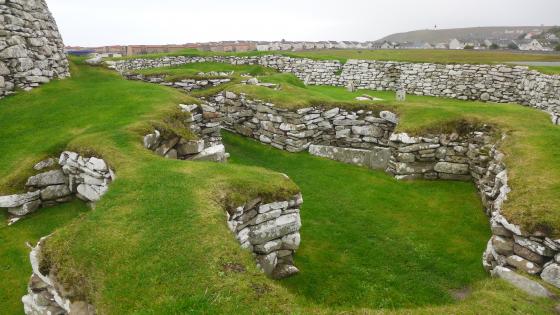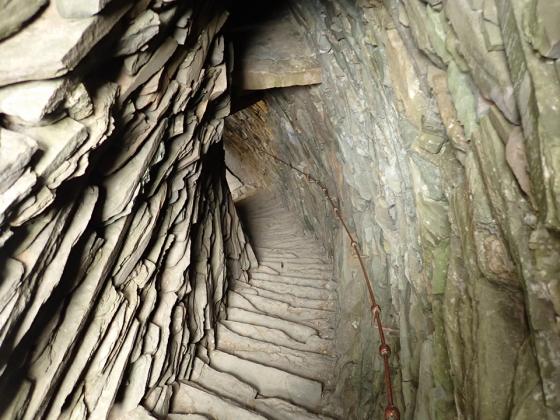The narrator has just visited the kirk of Tingwall when something catches his eye:
The novelty, however, engaged our attention most particularly, and we were at a loss to conjecture for what purpose it stood in its place. It was a large, erect, quadrangular stone, which, if cleared from a heap of rubbish that surrounded its base, might have measured in height six feet and upwards; but its irregularly fractured summit seemed to say, that formerly it had reared a prouder crest beside the waters of the Tingwell.
An oblique vein, of a different kind of stone, traversed its centre, and an old man, approaching from some cottages that were situated at the feet of the hills, informed us, with a look of doubt, that he had heard that a “sealgh” or sea-horse, having been fastened with a rope to the “Standing Stane,” the efforts of the animal to get loose had impressed that mark around it.
He likewise told us, that there had been a large flat stone lying near the upright pillar, which was said to have covered the bones of the “overseer” of Scalloway Castle, who was interred here; but he assured us, that after breaking the slab to pieces, to form the contiguous mull, he had sought in vain for remnants of mortality.
There was a look of peculiar originality in the face and person of our ancient informant, as well as a singular tone in his voice, and while he conversed with William, I included his portrait in a sketch I took of the Standing Stane, which being completed, we again set forward, with the unwelcome intelligence that the town we sought was “twa moils mair ahead.”
From ‘Tales of a voyager to the Arctic ocean’ by Robert Pierce Gillies (1826).
There is a photo on the RCAHMS site here – perhaps you can see the traces of the sea-horse’s struggle.













